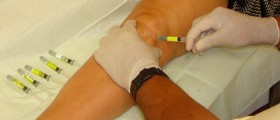
Paracentesis as the procedure
Paracentesis is the name of the procedure that is done in patients that have problems with ascites or building up of the fluid in the area of the stomach. The purpose of this procedure is to take out the accumulated fluid, and it is done with the help of a long needle that has to be inserted through the abdomen wall. The causes for the accumulation of the fluid or for the development of ascites may be various ranging from those such as simple infections and inflammations, to injuries, and serious conditions such as cirrhosis, or even some types of cancer. This procedure can be done for several purposes, but the most usual are related to finding the cause of the ascites, checking for certain types of inner injury after the belly has been injured, checking for cancer, diagnosing the infection, or removing the accumulated fluid in order to relieve the symptoms such as problems with digestion or breathing . As for the process of the procedure it is very simple and it is done under local anesthesia so the patient should not be afraid of feeling the pain. Those with less amount of fluid may even be in the sitting position during the procedure while others usually have to lie down on their back and their head has to be raised.
Complications of paracentesis
When speaking about the complications of this procedure, the fact is that, just like it is the case with even the simplest ones, we cannot say that there are no complications which are possible with this one. However given that this is a routine procedure, the patient who is about to undergo paracentesis, should be aware that the compilations happen extremely rarely, and that the chances that they might happen are practically negligible. Those suffering from cirrhosis are a bit more prone to infections and bleeding but the fact is that even they rarely experience them.
The doctor will have to get all the necessary information about the patient and their health history in advance, because he will have to make sure that the patient is not taking any medications particularly blood thinners, that there is no risk of an allergy to anesthetics, and, in cases of females, that the patient is not pregnant. In order to make sure that the patient does not have any problems with bleeding or blood clotting of some blood tests may also be done.

















Your thoughts on this
Loading...